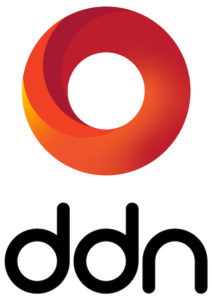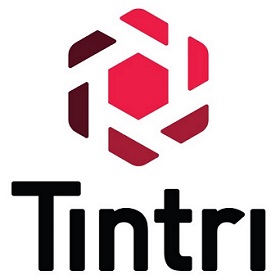DDN Rebrands, Targeting HPC+AI and Enterprise

Long-time HPC storage technology leader DDN unveiled a new strategy today replete with a new logo, refreshed website, and two distinct business units, DDN, serving its traditional HPC plus AI base, and Tintri, serving traditional enterprise and virtualized/cloud environments. The rebranding has been two years in the making during which DDN made key acquisitions and set out to expand its market footprint.
 “Over the last two decades, DDN has developed a strong reputation and a significant global footprint in the areas of AI, big data, multicloud, and high-performance computing. Our customers’ sustained trust in us and our products has made us the largest privately held storage company,” said Alex Bouzari, CEO and co-founder, DDN, in the official announcement. “With our recent acquisitions and continued investment in innovation, we have the technology and expertise to optimize business operations with Intelligent Infrastructure for a changing world.”
“Over the last two decades, DDN has developed a strong reputation and a significant global footprint in the areas of AI, big data, multicloud, and high-performance computing. Our customers’ sustained trust in us and our products has made us the largest privately held storage company,” said Alex Bouzari, CEO and co-founder, DDN, in the official announcement. “With our recent acquisitions and continued investment in innovation, we have the technology and expertise to optimize business operations with Intelligent Infrastructure for a changing world.”
DDN has indeed been busy acquiring Lustre from Intel (2018, parallel file system), Tintri (2018, virtualization and predictive analytics), Nexenta (2019, software defined storage and IoT expertise), and IntelliFlash from Western Digital (2019, hybrid, all flash, and NVMe storage). DDN, of course, is a powerhouse in its own right in HPC-centric storage (parallel files system, object storage, IME acceleration). Like most technology vendors, DDN has steadily incorporated AI-enabling attributes.
 The idea now is to serve a much larger market. DDN (business unit) will continue serving its traditional HPC client base, which DDN characterizes as the ‘At Scale’ segment; this seems to imply big boxes and large capacity. DDN is quick to point out the DDN business unit will also serve enterprises seeking more technical HPC/AI capacity. In the enterprise segment, Nexenta and IntelliFlash are being consolidated under the Tintri label and the Tintri business unit will serve the broader enterprise and cloud market.
The idea now is to serve a much larger market. DDN (business unit) will continue serving its traditional HPC client base, which DDN characterizes as the ‘At Scale’ segment; this seems to imply big boxes and large capacity. DDN is quick to point out the DDN business unit will also serve enterprises seeking more technical HPC/AI capacity. In the enterprise segment, Nexenta and IntelliFlash are being consolidated under the Tintri label and the Tintri business unit will serve the broader enterprise and cloud market.
In a briefing with HPCwire, Kurt Kuckein, DDN vice president of marketing, said, “DDN has undergone a significant transformation over the last two years. We see ourselves definitely more appealing to the enterprise side of the IT organizations especially because of the acquisitions. We’re building our go-to-market plan around this idea of intelligent infrastructure. Just to define that a little bit, one [piece] is infrastructure that is rich in informing an AI ops type of approach to IT – so using the analytics that came with the Tintri and IntelliFash acquisitions to provide predictive metrics for helping customers in planning.
 “We can see going towards an intelligent storage box that would inform the customer of opportunities to optimize their data management, for example, [providing guidance on] whether data belongs on a parallel file system type of infrastructure or on a more enterprise oriented type of infrastructure, like Tintri or Nexenta. It’s creating infrastructure that makes it much easier to consume their data, regardless of the type of platform that they’re on.”
“We can see going towards an intelligent storage box that would inform the customer of opportunities to optimize their data management, for example, [providing guidance on] whether data belongs on a parallel file system type of infrastructure or on a more enterprise oriented type of infrastructure, like Tintri or Nexenta. It’s creating infrastructure that makes it much easier to consume their data, regardless of the type of platform that they’re on.”
Kuckein has also written a blog (New Identity for DDN) discussing DDN transformation: “We have already deployed at massive scale DDN solutions which are AI enabled in a variety of markets and use cases which one could characterize as very high performance. Think Deep Learning, Image Analysis, and Natural Language Processing and other AI technologies at enormous scale and most importantly, in production. We have focused on high performance and large scale for over 20 years, and we have extensive expertise at all levels of the organization helping customers address and solve these challenges with excellent results.
“Acquisitions in the past two years are allowing us to innovate in new ways. Our Intelligent Infrastructure platforms are now significantly easier to deploy, manage and grow. This means solutions that are much easier to architect into Enterprise IT environments. It’s a true Win/Win. At Scale efficiency with Enterprise ease of use and reliability. We are simplifying management and Operations even more by layering in data analytics software which makes the infrastructure itself more intelligent – with the goal of going from predictability to automation.”
Currently, the bulk of DDN business is from the HPC/AI sector. Kuckein said, “If you look at run rates, the At Scale group is moving towards about $400 million annually, and the enterprise group is around $100 million annually.” There is obvious upside in the enterprise market.
Competition in the traditional HPC market, particularly at the tier where DDN has enjoyed success, has always been intense and has grown more so with industry consolidation and efforts by systems builders to integrate their own storage technology. A good example is Cray’s (now HPE) sweep of planned U.S. exascale contracts. Cray bundles its ClusterStor storage with its big systems.
Kuckein notes pragmatically, “This has been historically true for Cray. The tightness of the integration of ClusterStor to their compute capabilities is an advantage in those kind of large contract situations. I still think for other customers, we have additional capability and flexibility in our storage that gives us advantages. It’s always a trade off when competing against somebody who has both the storage and compute solutions tied together. We see for a lot of customers who either don’t go all Cray or are not Cray customers, the flexibility and lack of lock in from us is a definite advantage.”
IBM and Isilon are among DDN’s competitors as well as various newcomers such as WekaIO and Vast Data, which are also gaining traction.
 It is perhaps notable and underappreciated that DDN is now the largest privately-held storage technology provider. DDN has 1,000 employees, 10,000 customers, and ten technology centers around the world (U.S., Japan. China, India, and Europe). Making its recent investments payoff requires growth in the enterprise market which dwarfs the traditional HPC/technical computing market.
It is perhaps notable and underappreciated that DDN is now the largest privately-held storage technology provider. DDN has 1,000 employees, 10,000 customers, and ten technology centers around the world (U.S., Japan. China, India, and Europe). Making its recent investments payoff requires growth in the enterprise market which dwarfs the traditional HPC/technical computing market.
Kuckein said, “We see a changing landscape in the market in customers that previously have not been needing HPC-like infrastructure coming to embrace that, whether it’s because they’re trying to leverage high-performance compute infrastructure, like GPUs, or just realizing that the amount of data that they need to be able to inform things like deep learning is requiring a new infrastructure that their traditional models did not meet. We provide that that flexibility between the enterprise model, which is focused around agility for VMs and containers, and uptime and flexibility and data protection services around databases and analytics, versus performance and scale-centric model focused on loads computing power.”
Link to the DDN blog: https://www.ddn.com/blog/ddn-new-identity/










